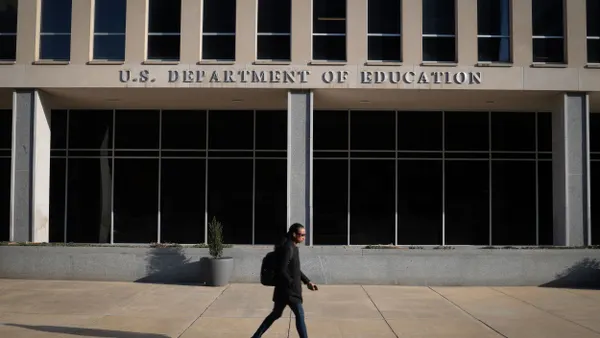Dive Brief:
- School closures and consolidations could occur more frequently in the coming months and years as student enrollment continues to decline, ultimately leading to budget strains on districts and underutilized school buildings, according to an analysis released Thursday by Bellwether.
- Bellwether’s analysis of 9,300 school districts found that 68% experienced declining enrollments between the 2019-20 and 2023-24 school years. Among districts examined that faced enrollment dips, the median district by enrollment may have lost about $1.5 million in revenue during that period, the researchers found.
- Despite the tumultuous combination of drops in enrollment and funding for a majority of districts, the analysis said, very few are actually closing school buildings even given the high cost to maintain them when under capacity.
Dive Insight:
The total estimated loss in revenue from enrollment declines for the nation's largest 100 districts — based on the hypothetical analysis Bellwether conducted — could be particularly stark, at $5.2 billion, based on 2023-24 enrollment. The median district by enrollment amount these large districts may have lost out on is $37.4 million, the report said.
The hypothetical projected revenue losses are based on local and state funding formulas for enrollment, but do not consider federal pandemic relief funds or other funding streams the districts might have received, said Christine Dickason, a report co-author and senior analyst in policy and evaluation at Bellwether, a national education nonprofit that aims to improve outcomes for marginalized youth.
Enrollment fell by roughly 2 million students across the school systems that Bellwether studied between the 2019-20 and 2023-24 school years. While enrollment declines proliferated across every region nationwide, the highest concentration came in the West (76%) and Northeast (73%), with the Midwest (67%) and South (60%) trailing closely.
The Bellwether report illustrates that no one specific kind of district is totally “immune” to this issue, Dickason said.
“A lot of different types of districts — across regions, across demographics, all kinds of things — are going to have to grapple with declining enrollment, especially in this time of tightening budgets,” she said.
Los Angeles Unified School District, for instance, saw a 13.1% decline in enrollment — losing over 57,000 students from 2019-20 to 2023-24, according to Bellwether. At the same time, the district could have lost over $1 billion in revenue during that period. The district approved its budget for the 2025-26 school year in June, thus far avoiding any immediate school closures or consolidations.
To stave off school closures, many districts are first cutting staff positions or pulling from their contingency funds, Dickason said.
But in the coming years when closures are more likely amid declining enrollment and revenues, Dickason said, open and transparent communication with the school community is key. Otherwise, public trust in the district can be lost, she said.
“School closures are never easy,” Dickason said, but “avoiding these types of tough decisions like school closures can actually lead to less services and opportunities for students.”
While research is fairly sparse on gauging national school closure trends, more studies are slowly revealing that public school enrollment declines are likely to persist given lower birthrates and even families pivoting to private schools, homeschooling and other alternatives to the traditional public school model.
That shift isn't likely to go away, especially as more states invest in universal school choice programs, and as the nation’s first federally funded private school choice program was recently enacted as part of President Donald Trump's "big, beautiful" domestic policy bill.












